It’s all in the sauce. Whether you want to believe it or not, it’s all in the sauce. If you have deliciously wonderful sauce, you can make almost anything taste good.
I just finished preparing the best tasting tomato sauce ever. The funny thing is, I feel like I made something similar a thousand times in the past. I suppose the difference between what I made back then compared to what I made today was technique. Back then, I threw some ingredients in a saucepan and let them simmer for a while. I didn’t develop any flavor. Today, I developed flavor. I stirred and heated and stirred some more. I took care to watch my ingredients and at the very last second, I moved to the next step. And then I stirred again. I learned that if one wants good flavor, one needs to pay attention very closely.
Tomatoes
Let’s talk about tomatoes for a minute. From what I gather, tomatoes that are purchased from the supermarket were picked when they were, let’s say, less than ripe. If ripeness in a tomato brings flavor, then the ones we purchase all year long aren’t exactly the best we can do. Of course, the tomatoes we’d all like to use in our salads, on our sandwiches or in our sauces are the ones we pick from the backyard in August or September. Those tomatoes can come off the vine and onto our plates within a matter on minutes. If grocery stores tried to do this, they be left with a mushy mess from over ripe tomatoes by the time they ever saw the light of day.
Oddly enough, canned tomatoes offer a sweeter, more ripe flavor than ones found in the produce aisle. When a tomato is placed into a can, it’s ripe. It’s stored, opened and used. I think the perception is what turns people off about canned tomatoes. It’s a shame, because you can get really great results from canned tomatoes.
For today’s recipe, I’ll be using one large can of crushed tomatoes. I can tell you that the sauce is incredibly awesome. I have no doubt that I’ll be using this recipe over and over again. I need to look no further.
The Recipe
This recipe is super simple. I recommend that you double or triple up on it and store any extra sauce in the freezer. That’s what I’m going to do because I wouldn’t want to make these small batches over and over again. Also, not only is this sauce perfect for pasta, but it’s also good for eggplant parmesan, lasagna and anything else you can think of that requires something like this. Make a bunch and eat it as often as you wish.
Ingredients
Serves: 1 pound of pasta
1 Large Can (28 Ounces) of Crushed Tomatoes
1/4 Cup of Grated Onion (I used sweet)
2 Tablespoons Butter
1/2 Teaspoon + Pinch Table Salt
1/4 Teaspoon Dried Oregano
2 Garlic Cloves (Crushed)
1/4 Teaspoon Sugar
1 Tablespoon Extra-Virgin Olive Oil
2 Tablespoons Chopped Fresh Basil and/or Parsley
Ground Black Pepper
Step-by-Step Instructions
The idea behind this recipe is to properly develop much of the sauce’s flavor up front and then add complexity to it as things progress. Remember, keep your eye on the heat and how much you stir. You don’t want anything to under or over cook. It’s in the timing with this one.
Melt Butter
In a medium saucepan, melt the 2 tablespoons of butter over medium heat. Don’t let it brown, just melt it until it’s a bubbly liquid.
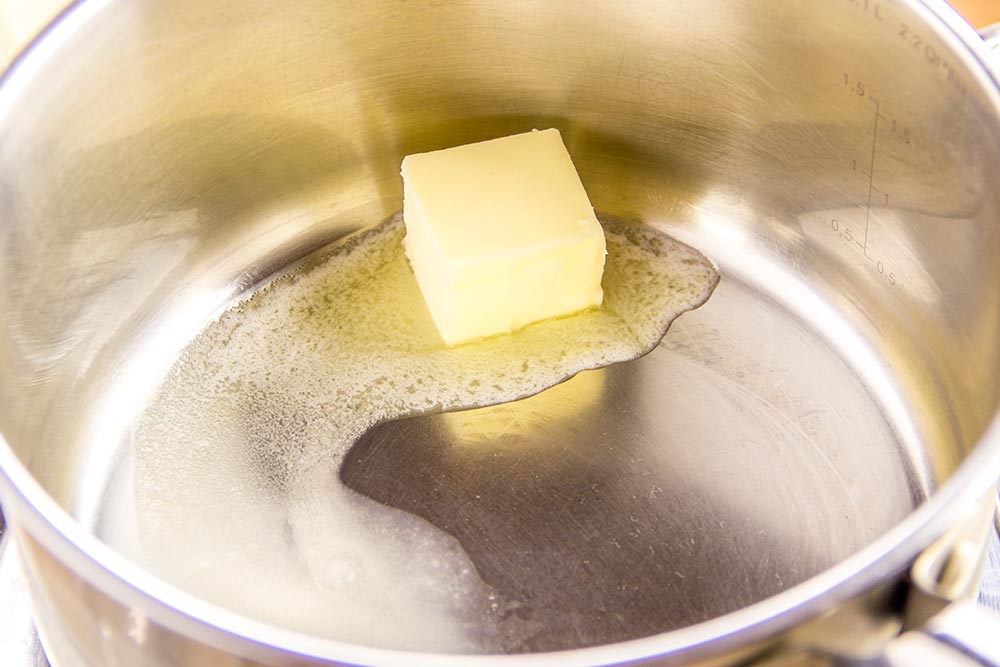
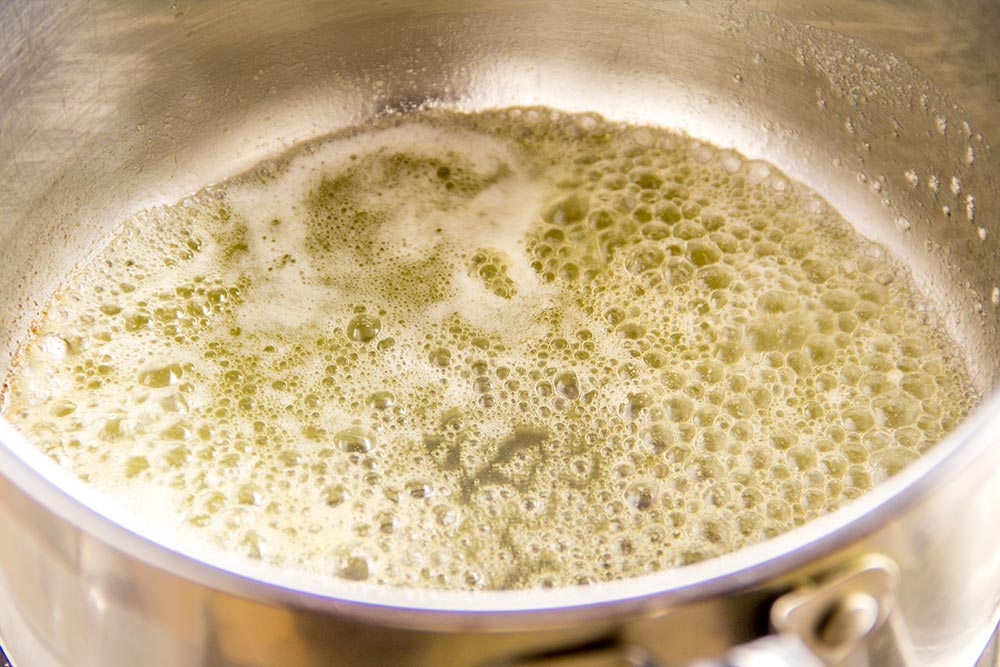
Add Grated Onion
By grating the onion, we can quickly brown it so it adds a nice sweet flavor to our sauce. Grating breaks the onion down so it’s easily worked. At this point, add the 1/4 cup of grated onion to the butter in the saucepan.
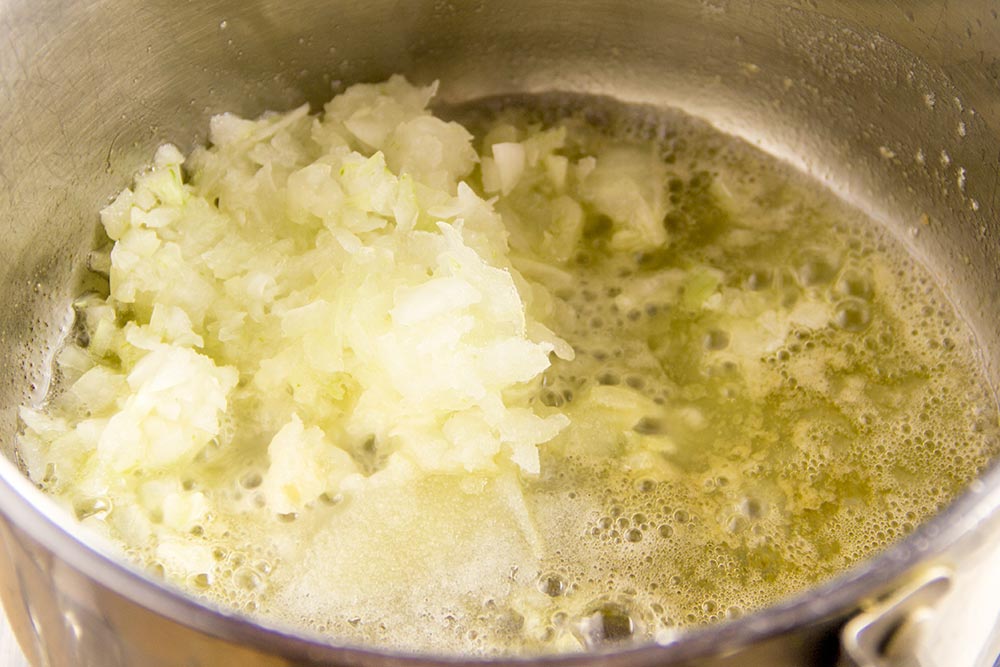
Add Oregano & Salt
Right after you add the onion, add the 1/4 teaspoon of dried oregano and the 1/2 teaspoon of salt.

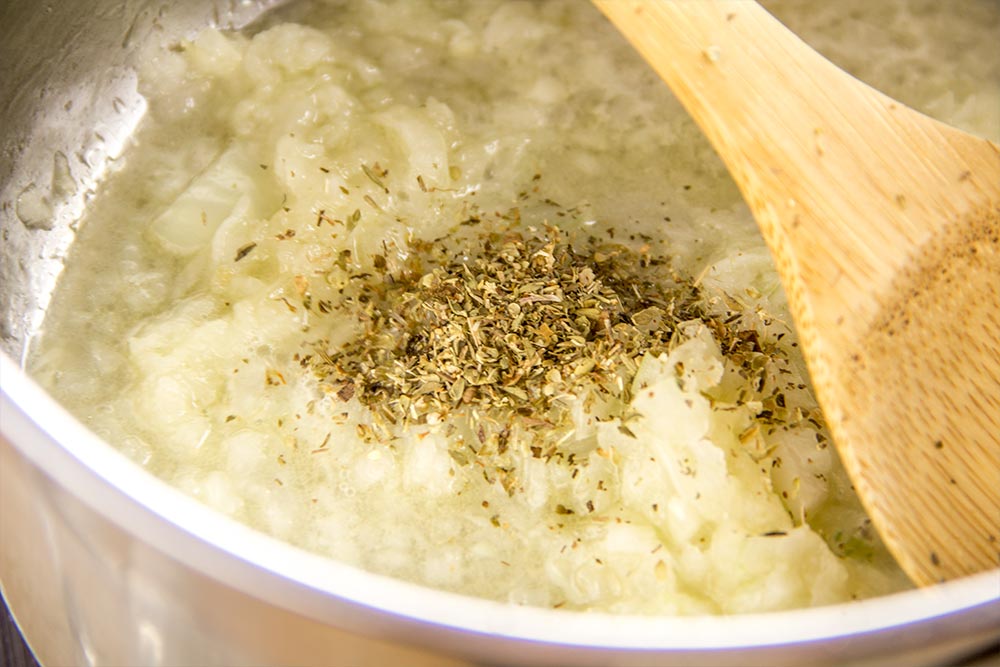
Brown the Onion
At this point, the goal is to brown the onion lightly. It’ll take approximately 5 minutes over medium heat to caramelize the onion enough to offer the flavor we’re looking for. Remember, stir often.
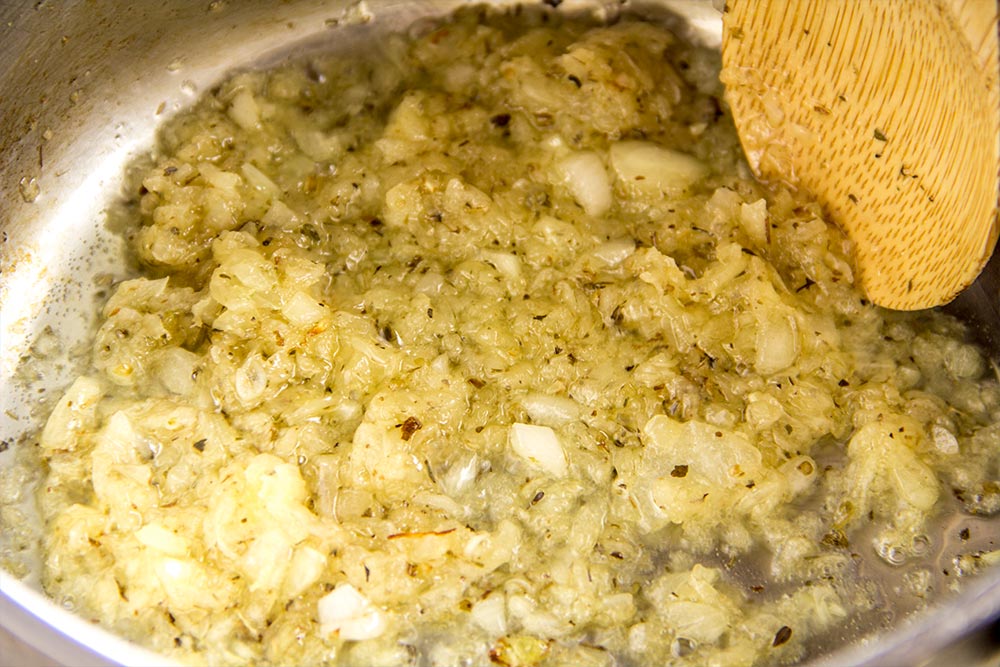
Add Garlic
After the onion is lightly browned, it’s time to toss in the 2 cloves of crushed garlic.
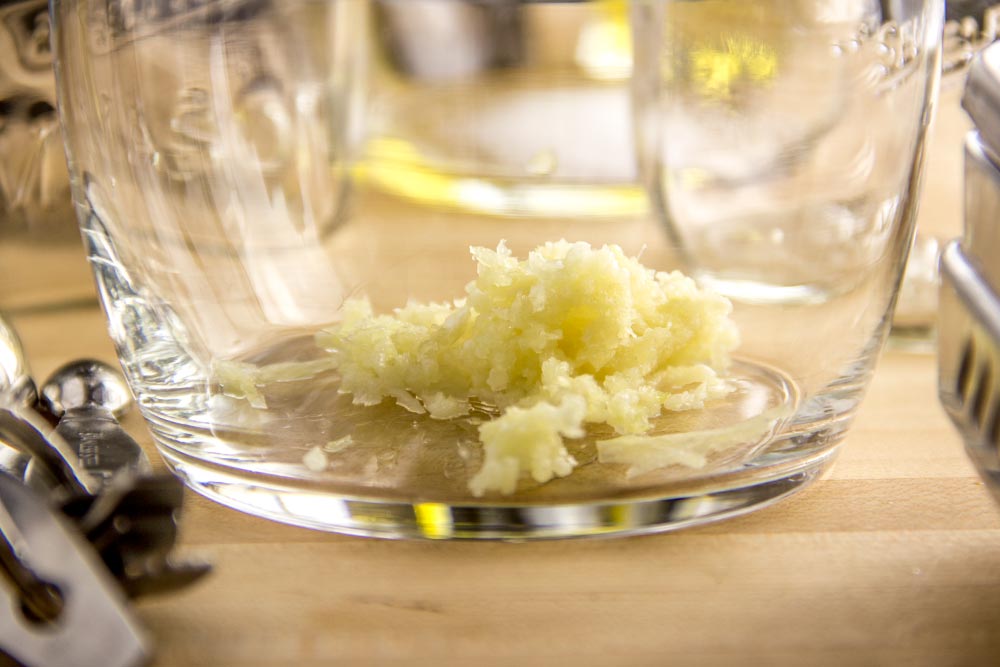
The garlic only needs to remain over the heat for about 30 seconds. It’s important to not overcook garlic because the flavor will change dramatically, and we don’t want that. Again, remember to keep on stirring.
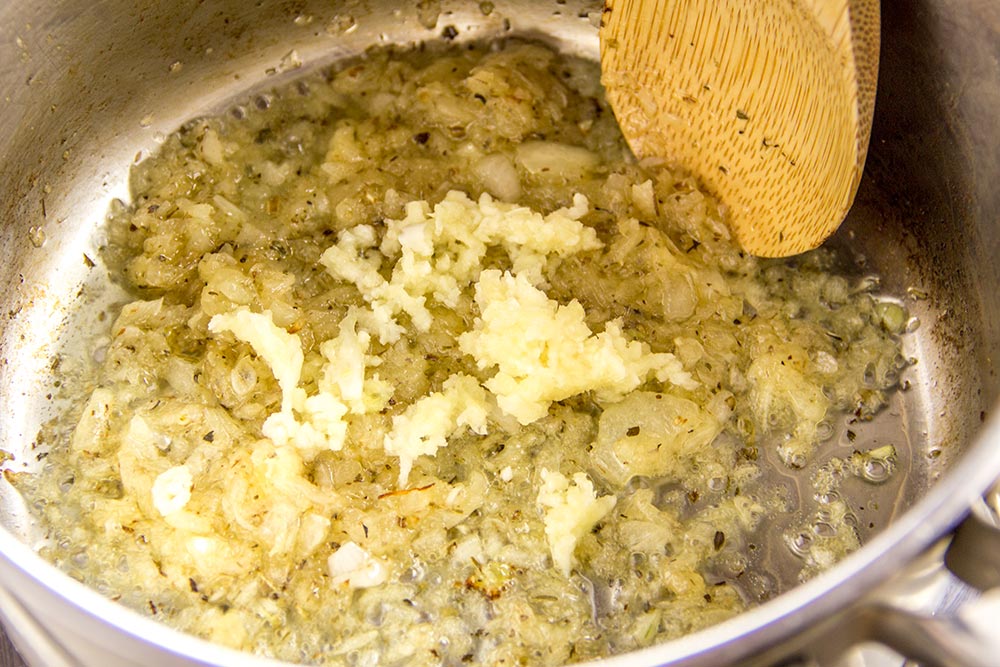
Add Crushed Tomatoes & Sugar
After 30 seconds of stirring and after you can clearly smell the garlic cooking, go ahead and add the entire 28 ounces of crushed tomatoes to the saucepan.
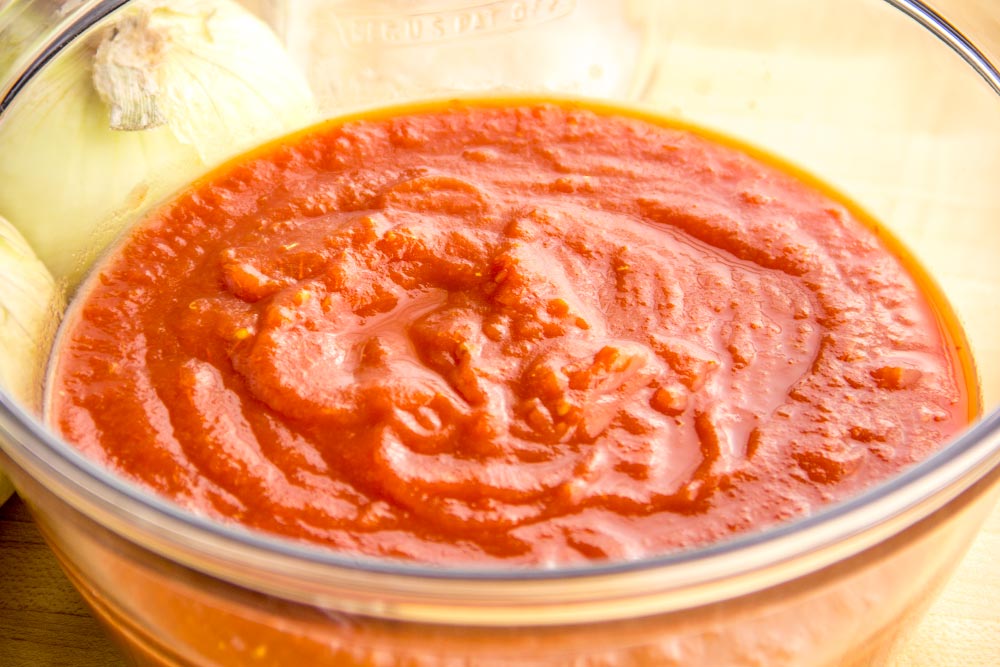
Right after you add the crushed tomatoes, go ahead and add the 1/4 teaspoon of sugar as well.
Simmer the Sauce
When all the above ingredients are safely in the saucepan, bring the heat to high until you get a boil. After that, reduce the heat to medium-low and simmer for about 10 minutes. The idea is to slightly thicken the sauce. It’s important to continue stirring because you don’t want the sauce to burn to the bottom of the saucepan.
Add Olive Oil & Chopped Basil
After the 10 minutes are up and the sauce has thickened a bit, you can remove the pan from the heat. Also, at this point, add the 1 tablespoon of extra-virgin olive oil and the 2 tablespoons of chopped basil. If you’re interested, go ahead and taste the sauce before you add the oil and then after. I think you’ll be surprised how much it mellows out and adds a fruity flavor.

Now, you might notice from the photo below that I’m adding 2 “Jay” tablespoons of herbs to my sauce. I decided to go with a mix of fresh basil and fresh parsley because these were left over from a previous recipe. If you like extra herbs in your tomato sauce, feel free to add “Whatever Your Name Is” tablespoons worth.
Salt & Pepper To Taste
Once you salt and pepper the sauce to taste, you’re finished. You can pour it on top of pasta or use it in whatever recipe you’d like. Personally, with this type of flavor, I can drink it out of a glass. I won’t, but I could. I decided to store most of the sauce in some mason jars I had laying around the house.
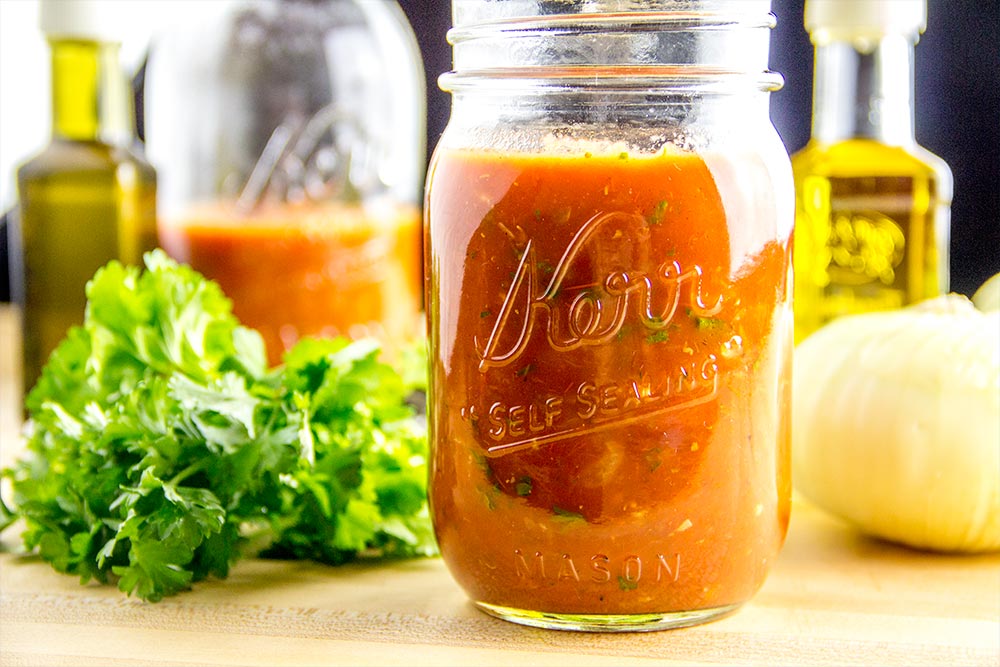
Additional Story & Photos
After I was finished preparing the sauce, I decided that I was getting hungry. I thought it would be a good idea to cook up some colorful rotini pasta for lunch. I also wanted to practice my photography a bit. Recently, Laura and I purchased some studio lighting for this blog as well as some new BIA Cordon Bleu dinnerware. Each of these items has really done wonders for the lighting, color and quality of the photos I get to post. While I’m still nowhere near an expert, I am finding myself much less frustrated, like I was with the horrible lighting I was forced to endure early on. These days, it appears to be much more bright and crisp. Below, you’ll get a behind the scenes look at what I do while left alone in a kitchen with a camera.
First, I cooked the pasta. I made sure to add the proper amount of salt to the water it boiled in because if there’s one thing I’ve learned about pasta, it’s that adding salt to the water is extremely important, flavorwise.
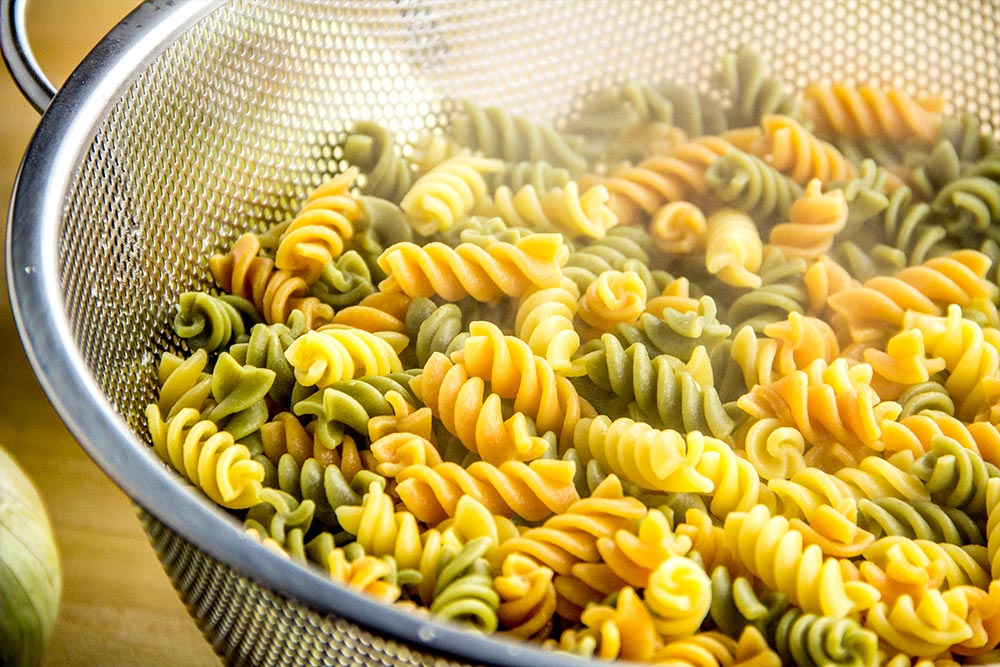
After I had plated some pasta into one of the new bowls, I spooned some fresh sauce onto it. FYI – this is the closest to a magazine shot as I’ll ever come. You should have seen this. I had to hold one hand steady as I tried to take the photo with the other. Good thing I’ve got a tripod and a camera with a flip screen viewfinder.
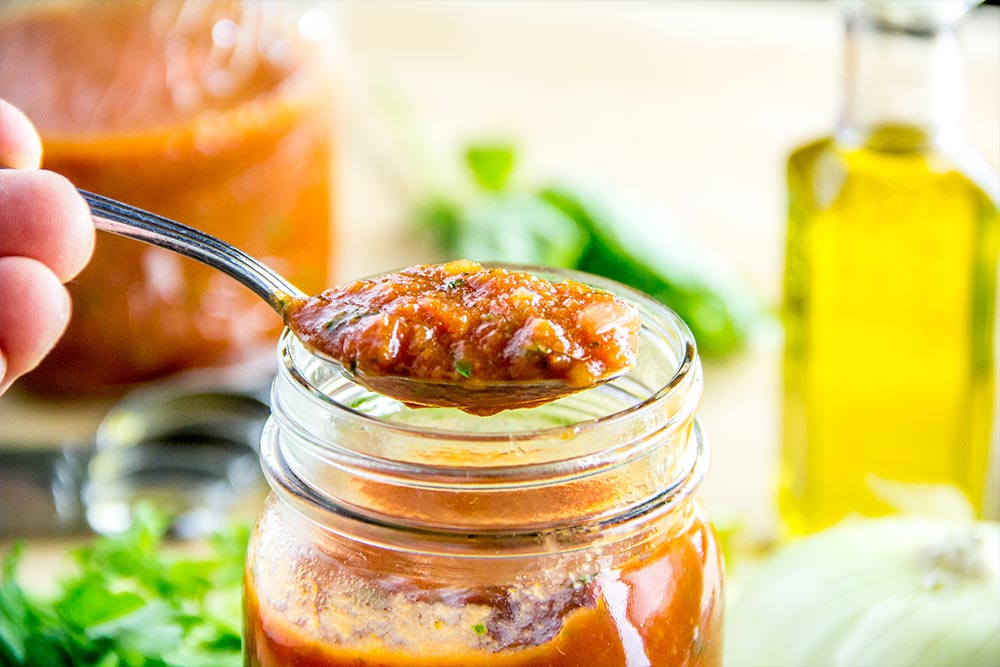
When I was ready, I practiced some plating and presentation. I’ll tell you one thing, food stylists are worth their weight in gold. It’ll take practice, but we’re on the right path.
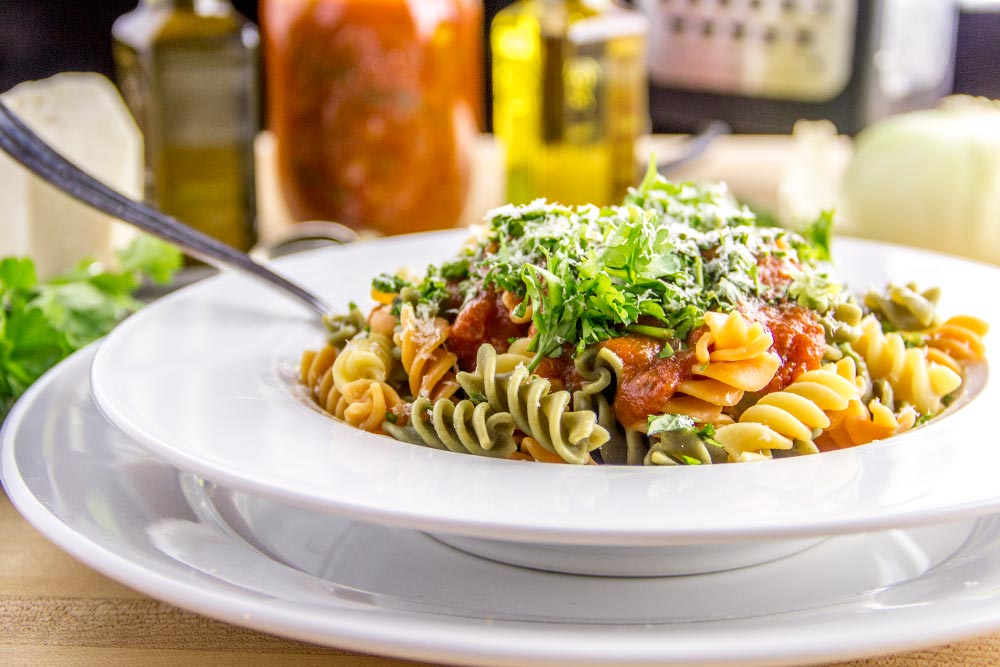
Here’s another for good measure.
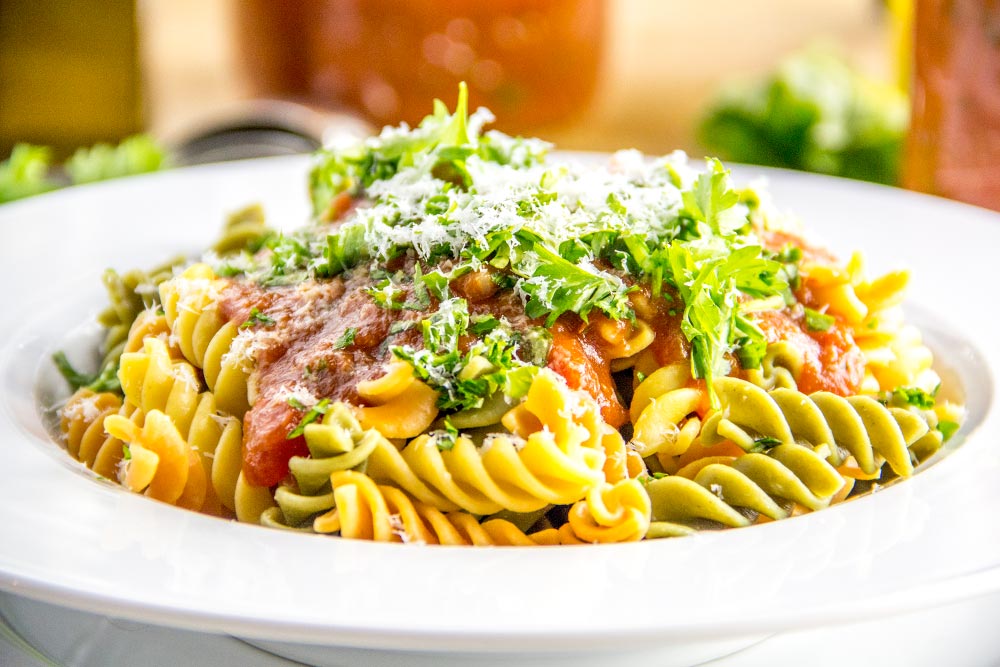
If you’ve enjoyed today’s post and found it helpful, please share it with a friend. Thanks!

Jay, your photos are looking great! Lighting really is everything. I’m still learning as well of course – it’s definitely a process to develop your style. This sauce looks delicious and is actually really similar to a tomato soup I posted last week. I totally agree – canned tomatoes do produce a great result and I think the bad rap is unfair.
Thanks for the compliment on the photos. It’s definitely a challenge to produce something that looks good, but I enjoy trying. I’m finding that one of my major issues is that Camera Raw likes to lean its white balance towards warm, as opposed to accurate. When I first post, everything looks good, but when I review the photos the next day, I have to redo a few of them to make them cooler. I’ll have to figure this one out. I even use a gray card, which is even weirder.
This sauce recipe is great. Very tasty, especially with the pasta. Also, I agree with the bad rap being unfair. The more I read what people “in the biz” have to say about them, I think canned tomatoes are a good choice. Unless, of course, you can pick them fresh from your back yard.
This sauce sounds and looks super delicious indeed, Jay. I couldn’t agree more about canned tomatoes, they have great flavor AND are so easy to work with (no blanching, peeling, coring, cutting…).
Agreed. I’m not sure I have the patience for all that fresh tomato processing. Although, I’m planning on growing a fairly good number of plum tomatoes this summer, so I suppose I should prepare for that. I’m happy with canned tomatoes though, so we’ll see what happens. Thanks for the comment!